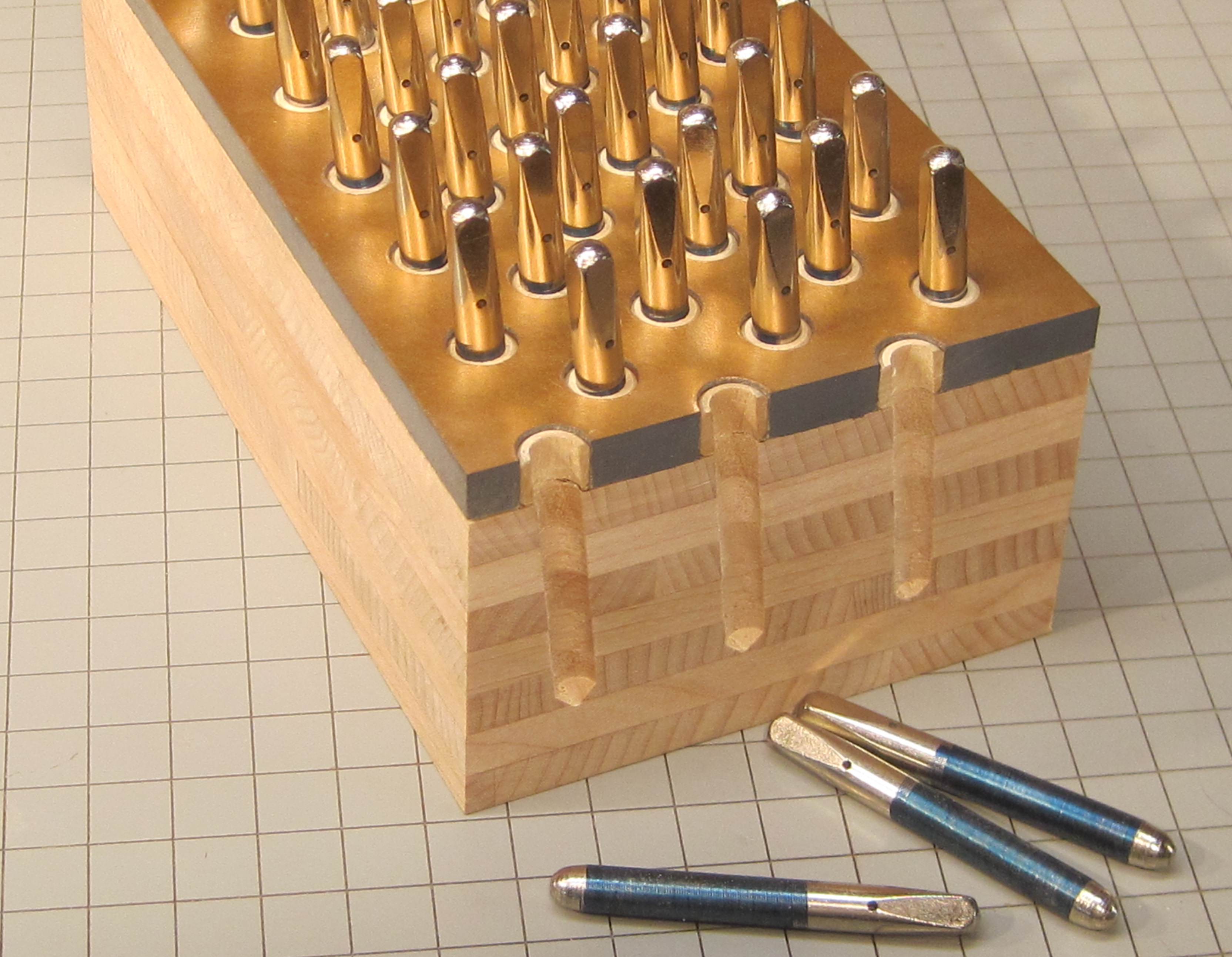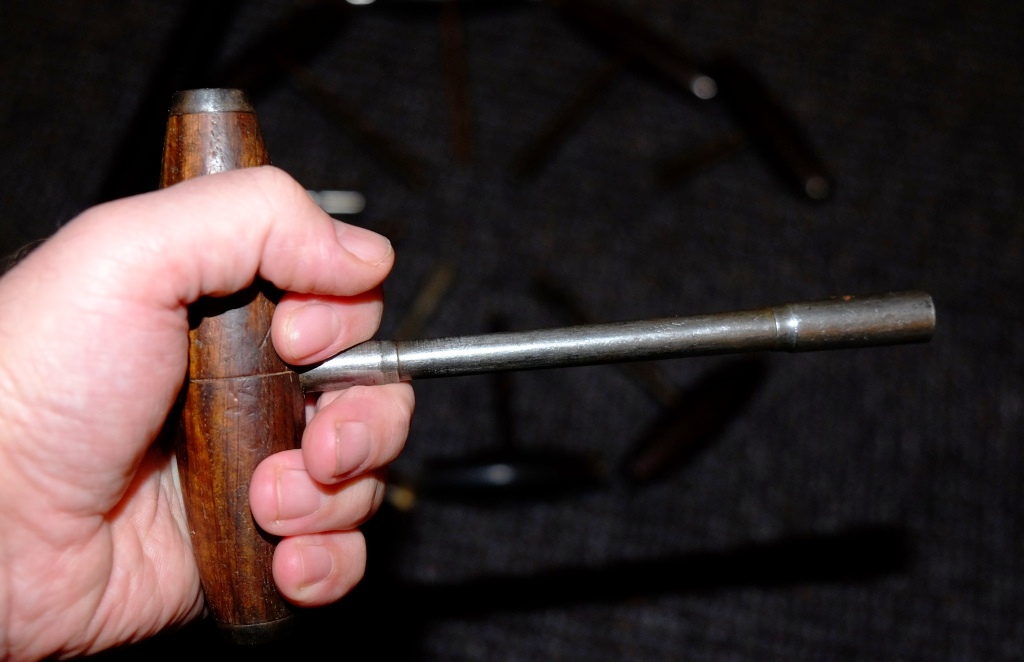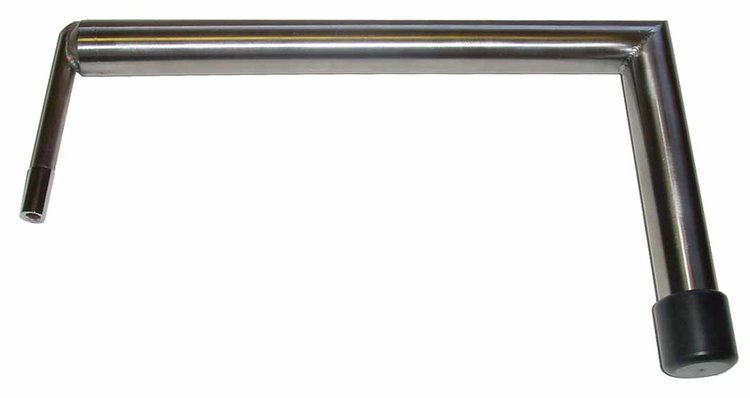What is tuning? How is it done?
“No tuning is ever finished - just left behind....”
Ron Nossaman, piano rebuilder.
How is a piano tuned? What is piano tuning? Here‘s my own definition:
Part arithmetic and part flower arranging.
On this page we’ll look first at the physical and mechanical aspects of tuning a piano, and then consider some theory about the musical scale and what it means to be "in tune".
MECHANICAL ASPECTS
A piano's sound is produced when little wooden hammers covered in highly compressed wool felt strike steel wire “strings” and set them in motion. The strings are secured at each end, and they pass over a raised bridge that is attached to the soundboard. The soundboard is a large slightly domed board usually made of spruce. When the string moves, its motion is transferred through the bridge, and sets the soundboard in motion.
This arrangement might be called an acoustic transformer. Loudness is gained, as the soundboard sets a much larger volume of air in motion than the string could on its own Taking energy from the string to do this, means that the string vibrates for a shorter time than it would without the connection to the bridge and soundboard.
At the bottom of an upright piano or the far end of a grand the string is secured round a Hitch Pin integral to the cast iron plate. The other end of the string, at the top of an upright, or near the pianist in a grand piano, coiled around a metal tuning pin like these:
The little holes are where the end of the string gets inserted. Tuning pins come in various diameters and lengths. Here’s a box of the most common sizes:
About 220 strings are needed for the 88 notes of the piano and the end of each string is coiled around its own tuning pin. The tuning pins fit very tightly into a laminated hardwood plank which in UK piano terminology is called the Wrest Plank and in USA parlance, the Pinblock.

Pinblock Photo © Chuck Behm, reproduced by kind permission.
The top grey and gold part represents the cast iron plate. The steel tuning pins are a very tight fit in the wooden pinblock.
Tuning involves adjusting the tension of each string by using a special wrench called a Tuning Lever to very slightly move the tuning pins. The movements are extremely subtle and much of the skill in tuning lies in ability to manipulate the tuning lever.
Here are some different tuning levers.
I’ve acquired a few over the years! The one at the top is my Fujan Carbon Fibre lever – among the ‘Ferraris’ of tuning levers. I think mine, purchased direct from Steve Fujan in the USA in May 2007, was probably the first in Scotland. Here’s a more artistic arrangement
The tuning levers above are L-shaped. That seems to be universal for modern piano work. A different type, T-shaped, used to be popular in the UK, and I am not sure why, because they must have been extremely difficult to use without bending the pins or damaging the pinblock holes. They give the tuner little leverage, making control difficult.

I’ve collected a few of these too!
My Fujan Carbon Fibre (or Fiber to give the correct USA spelling) lever is lightweight and rigid, giving very precise control.
The Fujan lever is one of a new generation of superior tuning levers; better engineered and using modern materials and techniques. Others are the levers by Charles Faulk, and those by Daniel Levitan, including the unique, patented Professional C Lever. I tried out the Faulk carbon fibre Lever of my friend Allen Wright (sitting in the window of Steinway Hall in London, when he was Technical Services Manager there, a not un-daunting experience!) and Allen tried my Fujan lever. They both give excellent control. Latterly for grand pianos Allen has preferred the Levitan Professional C Lever:

It's interesting to see new thinking applied to these fundamental tools of the piano technician. You can read more about them here: Levitan Faulk Fujan
Technicians really have more, and better, choices of tuning lever than ever before. Other very recent additions to available top-quality tuning levers made with carbon fibre, are the ones made by Mr R. Cassotto, and the new "Kestrel" carbon fibre levers from Supply88. The Cassotto levers are probably the most beautiful in the world.
At the ‘working end’ of a tuning lever is the tip, with a hole engineered to fit securely onto the Tuning Pin. All modern piano tuning pins have a tapered square end, and tuning lever tips generally have a “star” hole, which will fit on the pin in eight different positions.
Different sizes of tip are available, as makes have used various sizes of tuning pin, and some old pianos have quite small pins.
Tuning levers with square-hole tips are available but are less useful than the star-hole types.
Some very old pianos have tuning pins with oblong ends. These are annoying because the lever will only fit on in two positions. And there are different sizes of oblong pin end too, requiring more than one oblong tuning lever tip.
Some oblong pins are smaller and with a more oval profile:

Wielding the Tuning Lever
The technique of manipulating the tuning pin and string is extremely subtle. The strings pass over and under various components, which create pressure points. In this photo you can see that when the strings come from the coils around the pins, they quickly pass under a pressure bar, and then over a V—bar. These help to position the strings. There is friction at these points, and the tuner has to take account of possible differences in tension along the various segments of the string length.

The tuner must know and use the right techniques to set the pin and set the string. In other words, to ensure that the tuning is stable. Inadequate technique with these aspects can result in a tuning that quickly goes 'out'.
It is difficult to describe just how the tuning lever is manipulated physically, and we won’t attempt it here. It’s not especially necessary for understanding what’s to follow.
Could an amateur musician tune a piano using a mechanic's socket set, with a small enough socket? The short answer is no. It might be just about possible to somewhat correct a single string which for some reason has gone badly "out". But to achieve an entire piano tuning in such a manner is an impossibility.
We are going to move on now from the physical, mechanical aspects, to the other part:
THEORY OF THE SCALE AND TUNING
Books have been written about how our Western musical scale is derived, and this isn’t the place to go very deeply into these aspects – there is plenty of published material.
Pythagoras in ancient Greece (about 590-470 BCE) is noted for carrying out experiments and making discoveries about musical sounds. We like a scale of musical notes in which we go from one pitch, or frequency, to exactly double that pitch, or frequency, in a series of twelve steps. All of western music is based on such scales, or arrangements of notes.
Sound, Notes and Frequency
An item which moves 440 times per second, pushes the air around it that many times per second, and the air shoves our eardrums that many times per second The movement of the eardrum is transmitted by three tiny bones to the inner ear and in a mechanism of great beauty and complexity, converted into electrical nerve impulses for interpretation by the brain. The sensation we then experience, is what we call the note A above Middle C.
If we go down twelve steps from there, we get another A, which 220 times per second. Going up instead of down, we get an A at eight 880 movements per second. These vibrations, or "cycles per second” are named after the physicist Hertz, with the abbreviation Hz. Thus we say that the note A above Middle C has a frequency of 440 Hz.
The first note on the piano is an A, (usually designated A0) and its frequency is 27.5Hz. If we go up the piano in seven “doublings” or seven octaves, calling the first note A0, we get:
A0 27.5 Hz
A1 55 Hz
A2 110 Hz
A3 220 Hz
A4 440 Hz
A5 880 Hz
A6 1760 Hz
A7 3520 Hz
This is a geometric progression, but let's not get too far into mathematics!
What about the other notes in the scale, between the A notes? Pythagroras by experiment found pleasing mathematical ratios that worked well to give pleasant sounding notes. He found that if you multiply the frequency of a note — say A3, 220Hz, by 1.5, you get the musical interval we call a Fifth; the note E above middle C. Using Pythagoras’ multiplier of 1.5, the frequency of that E would be 330Hz.
If we start at the first note on the piano keyboard, which tuners designate as A0, and go up in a series of ”Fifths”, we find that on the twelfth jump, we are at the same place as on the seventh Octave jump, back to an A.
The notes would be (follow it on the piano keyboard if it’s easier):
Starting point A0,
First jump E1
Second jump B1
Third jump F#2
Fourth jump C#3
Fifth jump Ab3
Sixth jump Eb4
Seventh jump Bb4
Eighth jump F5
Ninth jump C6
Tenth jump G6
Eleventh jump D7
Twelfth jump A7
However, if we use Pythagoras' multiplier of 1.5 to get the frequency of each fifth from the fifth below, something odd happens. Here are the frequencies starting at A0 and multiplying by 1.5 each time:
Starting point A0 27.50
First jump E1 41.25
Second jump Bl 61.88
Third jump F#2 92.82
Fourth jump C#3 139.23
Fifth jump Ab3 208.85
Sixth jump Eb4 313.28
Seventhjump Bb4 469.92
Eighthjump F5 704.88
Ninthjump C6 1057.32
Tenth jump G6 1585.93
Eleventh jump D7 2378.97
Twelfth jump A7 3568.46
Erk…… When we get to the A seven octaves up from the starting point, the frequency, calculated using twelve jumps of 1.5 (the ‘correct’ ratio for an interval of a Fifth), that A is 48.46Hz differentl
Maybe an easier example would be to consider the musical interval of a Major Third. Three Major Thirds add up to an octave. Starting at A 220Hz, the first Major Third up is C# then F then A. Pythagoras determined that to go up by a Major third, you should multiply the starting note by 1.25. So, we would have A 220 Hz, C# 275Hz, F 343.75 Hz, A 429.69 Hz.
Eekl The next A up is supposed to be an Octave, double the frequency, 440Hz not 429.69 Hz!
These differences are part of what is called the Pythagorean Comma. This problem happens with all the ratios Pythagoras worked out for the series of notes in a scale. Pythagoras wasn’t wrong. It's a problem in physics. If you tune each of the thirds above to the frequencies given, you will get three beautiful euphonious thirds when played individually. But they will sound awful played together, and won't add up to an octave.
In order to get a scale on the piano to ”fit" properly, it is necessary to temper the intervals — to alter them to fit, as it were.
Taking the example of the three Thirds, you can see that there is a "shortfall” of 10.31 Hz; they fail to add up to an octave by that amount. The Thirds therefore need to be "widened" a bit, so that they add up to an octave.
The generally accepted system of tempering the scale, or adjusting the spaces between the notes away from Pythagoras' theoretical intervals, such that they will all "fit” into a scale, is called Equal Temperament. (Again, there are books about this).
The idea in Equal Temperament is to go from one note to the same note an Octave above, in a series of 12 steps of equal proportion. To do that, you multiply the frequency of a note, by the 12th root of 2 to derive the frequency of the next note up, in the scale. The 12th root of 2 is the number which, multiplied by itself 12 times, gives 2. That number to seven decimal places is 1.0594631.
If we multiply A 220 by 1.0594631, we get the frequency of the next note in the scale, A# (Bb). Doing this twelve times brings us to A440. Almost — for all practical purposes anyway!
This is all enormously complicated by the fact that musical strings in a piano, like any other vibrating object, do not vibrate in a simple manner.
A string vibrates in sections as well as along its full length, and each of these sections contributes to the sound. The string for A220 also moves as two halves, three thirds, four quarters, etc. Thus it produces sounds, "harmonics", at 440Hz, 660Hz, 880Hz etc.
Every string in the piano behaves in this way. Each string produces a harmonic series, a whole set of frequencies. The frequency of a particular harmonic of one note, can be close to the frequency of a harmonic of another note and this gives rise to beats in the sound. Please see my page on Electronic Tuning for more about this.
When two sources of sound have a frequency that is close but not identical, an effect called beating is produced. You might have observed this with two propeller engines in a plane; the drone has a kind of pulse in it, when they are not at identical revs. Or two motor lawn mowers, as local authority workmen cut the grass in summer…..
For an example of Beats, watch the YouTube video at the end of this page.
This phenomenon of beats, is the basis for tuning a piano. Most notes have three strings per note (two in the lower tenor section and one in the low bass). Each of the three strings should be at absolutely identical frequency, therefore beatless.
Where does the flower arranging come in, that we referred to at the start?
No piano conforms to a perfect mathematical model. There are compromises with scale design, so that strings are not impossibly long. And within an individual string, as the string vibrates in fractions, the fractions have a higher relative stiffness, which can make each partial have a higher frequency that the theoretical harmonic. This is called Inharmonicity.
In addition, there is a tendency, which varies from person to person, for the ear to prefer a gradual increasing of the frequencies of the notes beyond their theoretical positions, in the top register of the piano. And in the very low notes, the fundamental whole string frequency is not very dominant; our ear extrapolates it down from the higher harmonics.
All of this (it's a lot more complex than this brief explanation) adds up to the fact that the tuner has to arrange the tuning, to place the notes, as it were, in a way that is best for the particular instrument (and client).
It is never a matter of conforming to some mathematical formula. That is why, while the tuner has to understand the arithmetic of the theoretical scale, he or she must also be a flower arranger.

The YouTube video below gives an example of the phenomenon of aural Beats. Two sound sources are each playing a sine wave tone of 440Hz at the start. One is then gradually increased to about 460 Hz, and back down to 440 Hz. A pulse or 'beat' can be heard, going from a slow wow-wow-wow to a 20Hz thrumming.